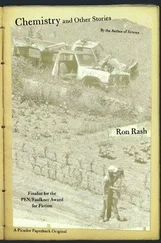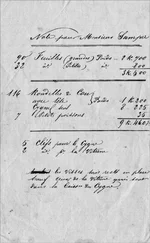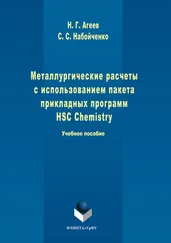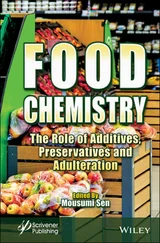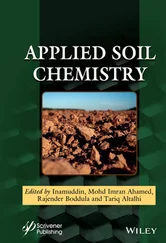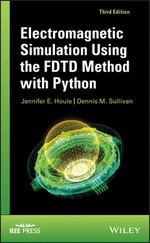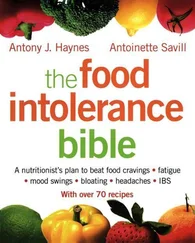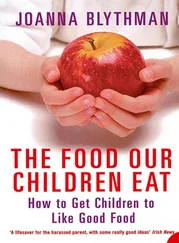Dennis D. Miller - Food Chemistry
Здесь есть возможность читать онлайн «Dennis D. Miller - Food Chemistry» — ознакомительный отрывок электронной книги совершенно бесплатно, а после прочтения отрывка купить полную версию. В некоторых случаях можно слушать аудио, скачать через торрент в формате fb2 и присутствует краткое содержание. Жанр: unrecognised, на английском языке. Описание произведения, (предисловие) а так же отзывы посетителей доступны на портале библиотеки ЛибКат.
- Название:Food Chemistry
- Автор:
- Жанр:
- Год:неизвестен
- ISBN:нет данных
- Рейтинг книги:3 / 5. Голосов: 1
-
Избранное:Добавить в избранное
- Отзывы:
-
Ваша оценка:
- 60
- 1
- 2
- 3
- 4
- 5
Food Chemistry: краткое содержание, описание и аннотация
Предлагаем к чтению аннотацию, описание, краткое содержание или предисловие (зависит от того, что написал сам автор книги «Food Chemistry»). Если вы не нашли необходимую информацию о книге — напишите в комментариях, мы постараемся отыскать её.
A manual designed for Food Chemistry Laboratory courses that meet Institute of Food Technologists undergraduate education standards for degrees in Food Science Food Chemistry: A Laboratory Manual
Food Chemistry: A Laboratory Manual
Food Chemistry — читать онлайн ознакомительный отрывок
Ниже представлен текст книги, разбитый по страницам. Система сохранения места последней прочитанной страницы, позволяет с удобством читать онлайн бесплатно книгу «Food Chemistry», без необходимости каждый раз заново искать на чём Вы остановились. Поставьте закладку, и сможете в любой момент перейти на страницу, на которой закончили чтение.
Интервал:
Закладка:
3 3 USDA ARS (2020). pH of selected foods [Internet]. [cited 2020 Mar 5]. https://pmp.errc.ars.usda.gov/phOfSelectedFoods.aspx(accessed 5 March 2020).
4 4 Bennion, M. (1980). The Science of Food . San Francisco: Harper & Row. 598 p.
5 5 AOAC Official Method 981.12 (1982). pH of Acidified Foods . AOAC International.
1.8 Suggested Reading
1 Lindsay, R.C. (2017). Food additives. In: Fennema’s Food Chemistry , 5e (eds. S. Damodaran and K.L. Parkin ), 803–864. Boca Raton: CRC Press, Taylor & Francis Group.
2 Segel, I.H. (1976). Biochemical Calculations: How to Solve Mathematical Problems in General Biochemistry , 2e. New York: Wiley. 441 p.
Answers to Problem Set
1 pH = 3.7; pKa = 5.4.
2 14.68 g sodium acetate; 19.26 g acetic acid.
3 Use NaOH to adjust pH; dissolve 6 g NaH2PO4 (or 6.9 g NaH2PO4·H2O) in water (~900 ml); using pH meter, titrate to pH 7.0 with 1.0 N NaOH; transfer to a volumetric flask and dilute to 1 l.
4 a)pH 5.2 acetate buffer: mix 768 ml 0.1 M sodium acetate and 232 ml acetic acid. pH 7.6 phosphate buffer: mix 128 ml 1/15 M KH2PO4 and 872 ml 1/15 M Na2HPO4.b)Calculated pHs: Acetate buffer = 5.27; Phosphate buffer = 8.04.
2 Chemical Leavening Agents
2.1 Learning Outcomes
After completing this exercise, students will be able to:
1 Write balanced chemical equations showing the production of CO2 in various chemical leavening systems.
2 Determine, experimentally, the rates of CO2 release from selected leavening systems.
3 Select a chemical leavening system suitable for making biscuits, muffins, and other baked products.
4 Use the ideal gas law to calculate the volume of available CO2 in a leavening system.
5 Calculate the weight of a given leavening acid required to neutralize a given amount of NaHCO3.
2.2 Introduction
Leavening is derived from the Latin word levo which means raising or making light. Batters and doughs containing wheat or rye flour may be leavened by incorporating gases into them. Five gases, either alone or in combination, may be used for leavening: carbon dioxide, water vapor, ethanol vapor, air, and ammonia.
The incorporation of leavening gas into baked goods is most frequently accomplished by either yeast fermentation or chemical leavening:
1 Yeast fermentation of sugars:(1)
2 Chemical leavening:Decomposition of salts: (2)Reaction of acids or acidic salts (HA) with sodium bicarbonate: (3)
In yeast leavened products, the CO 2is produced slowly, inflating air bubbles that have been previously incorporated into the dough during mixing. In contrast, chemical leavening provides some of the initial nucleating gas and provides a much faster means of inflating existing air bubbles during mixing and baking. When heated, the expanded dough “sets” forming the desired texture and lightness. Although seemingly simple in principle, a basic knowledge of chemical leavening is necessary in order to obtain the correct rate and amount of CO 2release for a specific application.
2.2.1 Chemical Leavening Agents
2.2.1.1 Baking Soda
Baking soda (also known as bicarbonate of soda) is pure sodium bicarbonate (NaHCO 3). It releases CO 2on reaction with acids (Eq. 3). It is commonly used in batters for muffins, pancakes, and cookies, in combination with a baking powder (see below). The source of acid in these batters may be sour milk (lactic acid), cultured buttermilk (lactic acid), molasses (various organic acids including acetic, propionic, and aconitic), lemon juice (citric acid), etc.
2.2.1.2 Baking Powders
Generally, baking powders contain three materials: (i) a CO 2source, (ii) one or more leavening acids, and (iii) a diluent or filler.
CO2 Source: Sodium bicarbonate is the most commonly used source of CO2 (Eq. 3). Ammonium bicarbonate is sometimes used in cookies and crackers; however, care must be taken to remove any residual NH3 gas formed during decomposition in order to alleviate off‐flavors (Eq. 2). Sodium bicarbonate dissolves almost instantly but requires some form of acid to release the CO2 (Eq. 3). Thus, the rate and degree of dissolution of the acid in baking powders governs the rate of CO2 release. Thermal decomposition of sodium bicarbonate does not occur to any large extent, except under conditions of excess soda and/or very high temperatures.
Leavening Acids: Leavening acids that react with bicarbonate to release CO2 rapidly when water or milk is added are called “fast‐acting.” “Slow‐acting” acids react more slowly because they dissolve slowly at room temperature. Little CO2 is liberated by slow‐acting acids until the system is heated. Heating increases the rate of dissolution thereby increasing the rate of CO2 generation [1]. A description of some common leavening acids used in baking powders follows:Monocalcium phosphate monohydrate (MCP‐H2O): Ca(H2PO4)2 .H2O. This leavening acid is used in most household baking powders. It is “fast‐acting.” In solution, it dissociates to form Ca2+ and H2PO4 −. The pKa of H2PO4 − is 7.21 while the pKa of HCO3 − is 10.33. Thus, H2PO4 − is a much stronger acid than HCO3 − and readily donates a proton to HCO3 − which, in this case, acts as a base:(4) One advantage of monocalcium phosphate over some other leavening acids is that it does not contain sodium.Sodium Aluminum Sulfate (SAS): Na2SO4‐Al2(SO4)3. SAS is frequently used in combination with MCP‐H2O in household baking powders to produce a so‐called “double‐acting” baking powder. SAS releases CO2 from soda only at elevated temperatures. Excess SAS may adversely affect the flour gluten causing finished products to have a dull color and slightly bitter taste [1]. Acid is produced when Al2(SO4)3 reacts with water to form sulfuric acid:(5) Once formed, sulfuric acid, a strong mineral acid, reacts rapidly with bicarbonate to generate CO2.Potassium Hydrogen Tartrate (Cream of Tartar): KHC4H4O6. Cream of tartar, a fast leavening acid, is not widely used in commercial baking powder formulations. It may be used in angel food cakes. Tartaric acid itself (H2C4H4O6) is a fast‐acting acid and may be used in combination with the tartrate salt.Coated Anhydrous Monocalcium Phosphate. Coating MCP with slightly soluble compounds converts it to a slow‐acting acid. Coatings may include slightly soluble calcium and aluminum phosphates.Glucono‐delta‐lactone (GDL). This is a slow‐acting acid and is stable in refrigerated and frozen doughs. Lactones are cyclic esters formed when alcohol and carboxylic acid groups on the same molecule react. GDL hydrolyzes slowly in water to yield gluconic acid.(6)Sodium Acid Pyrophosphate (SAPP): Na2H2P2O7. SAPP is available in several grades produced by varying manufacturing conditions. The different grades are identified by numbers which are related to rates of reaction with sodium bicarbonate at room temperature. For example, SAPP‐21, SAPP‐28, and SAPP‐40 represent grades with increasing reaction rates. SAPP‐21 is used when there is a delay between mixing and baking, for example in refrigerated biscuits [2].Sodium Aluminum Phosphate (SALP). NaAl3H14(PO4)8 .4H2O. A slow‐acting acid, SALP has replaced by SAPP in some applications because SAPP residual salts may impart an off‐flavor.Other Food Ingredients. Sour milk, cultured buttermilk, molasses, and ionic flour proteins are all acidic and therefore can act as leavening acids.
Diluents: Diluents are added to baking powders to prevent premature reaction of the sodium bicarbonate and acid, i.e. to provide physical separation of soda and acid, and to increase the bulk which makes measuring small quantities of sodium bicarbonate and leavening acid easier. Corn starch is the most common diluent. FDA requires that baking powders yield at least 12 g of CO2 for every 100 g of powder. In order to achieve this, most formulations contain 26–30% sodium bicarbonate [3–5].
Читать дальшеИнтервал:
Закладка:
Похожие книги на «Food Chemistry»
Представляем Вашему вниманию похожие книги на «Food Chemistry» списком для выбора. Мы отобрали схожую по названию и смыслу литературу в надежде предоставить читателям больше вариантов отыскать новые, интересные, ещё непрочитанные произведения.
Обсуждение, отзывы о книге «Food Chemistry» и просто собственные мнения читателей. Оставьте ваши комментарии, напишите, что Вы думаете о произведении, его смысле или главных героях. Укажите что конкретно понравилось, а что нет, и почему Вы так считаете.

